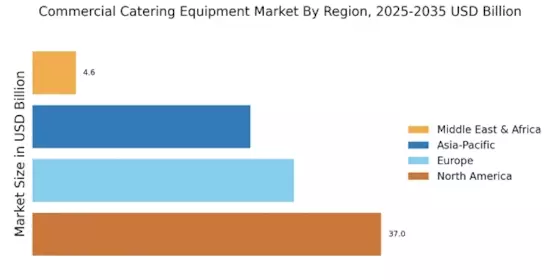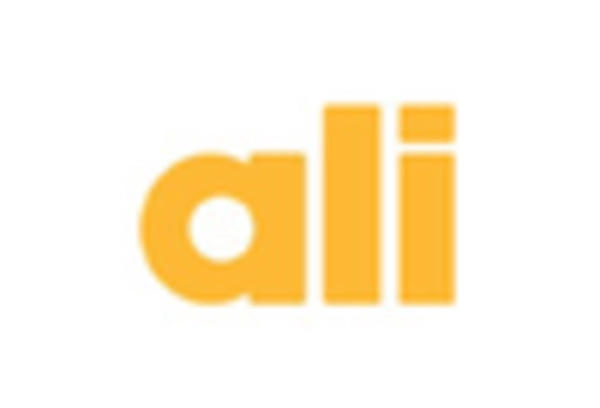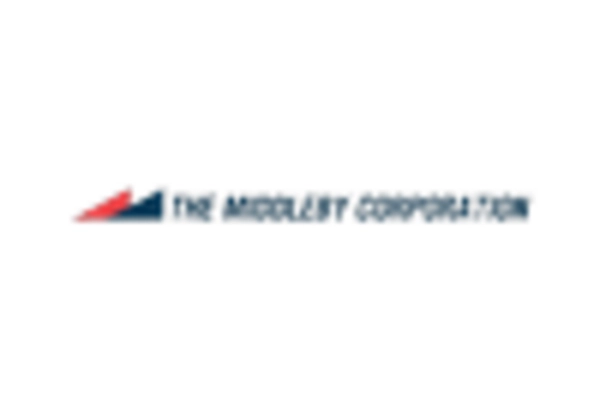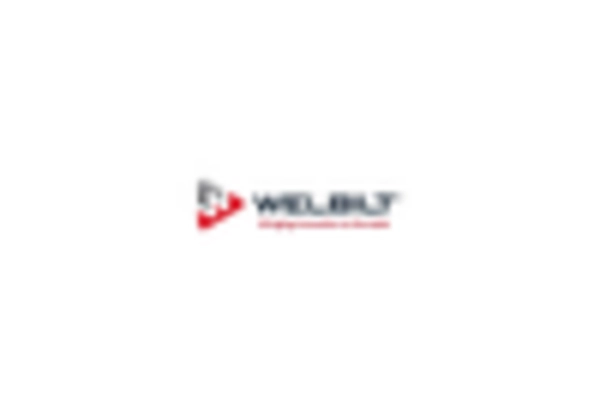Rising Demand for Food Services
The increasing demand for food services across various sectors, including restaurants, hotels, and catering companies, is a primary driver of the Commercial Catering Equipment Market. As consumer preferences shift towards dining out and food delivery services, establishments are compelled to invest in advanced catering equipment to enhance efficiency and service quality. According to recent data, the food service industry is projected to grow at a compound annual growth rate of approximately 4.5% over the next few years. This growth necessitates the adoption of modern catering equipment, which can accommodate higher volumes of food preparation and service, thereby propelling the market forward.
Focus on Health and Safety Standards
The emphasis on health and safety standards in food preparation and service is increasingly influencing the Commercial Catering Equipment Market. Regulatory bodies are enforcing stringent guidelines to ensure food safety, hygiene, and quality. As a result, catering businesses are investing in equipment that meets these standards, such as high-quality refrigeration units, cooking appliances with safety features, and sanitation equipment. This trend is expected to drive market growth, as establishments seek to comply with regulations while maintaining customer trust. The market for commercial catering equipment is anticipated to expand as businesses prioritize investments in compliant and efficient equipment.
Expansion of Food and Beverage Outlets
The expansion of food and beverage outlets is a significant driver of the Commercial Catering Equipment Market. With the rise of new restaurants, cafes, and catering services, there is an increasing need for diverse and efficient catering equipment. This trend is particularly evident in urban areas, where the food service sector is booming. Market analysis suggests that the number of food and beverage establishments is expected to increase by approximately 5% annually. This growth creates opportunities for equipment manufacturers to supply a wide range of products tailored to the needs of new and existing businesses, thereby stimulating market demand.
Technological Innovations in Equipment
Technological innovations are playing a pivotal role in transforming the Commercial Catering Equipment Market. The introduction of smart kitchen appliances, automation, and energy-efficient equipment is revolutionizing food preparation and service processes. These advancements not only improve operational efficiency but also reduce energy consumption, aligning with sustainability goals. The market is witnessing a surge in demand for equipment that integrates IoT technology, enabling real-time monitoring and management. As businesses seek to optimize their operations and reduce costs, the adoption of innovative catering equipment is likely to accelerate, further propelling market growth.
Growth of Online Food Delivery Services
The proliferation of online food delivery services is reshaping the landscape of the Commercial Catering Equipment Market. As more consumers opt for convenience, restaurants and catering services are adapting their operations to meet this demand. This shift necessitates the acquisition of specialized equipment that can support efficient food preparation and packaging for delivery. Data indicates that the online food delivery market is expected to witness a growth rate of around 10% annually. Consequently, catering businesses are likely to invest in equipment that enhances their ability to fulfill delivery orders promptly, thereby driving the overall market.


















Leave a Comment